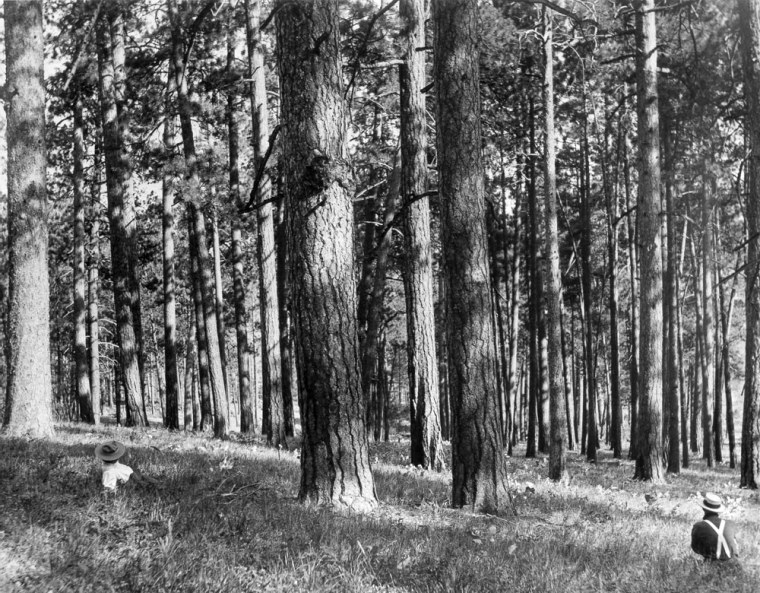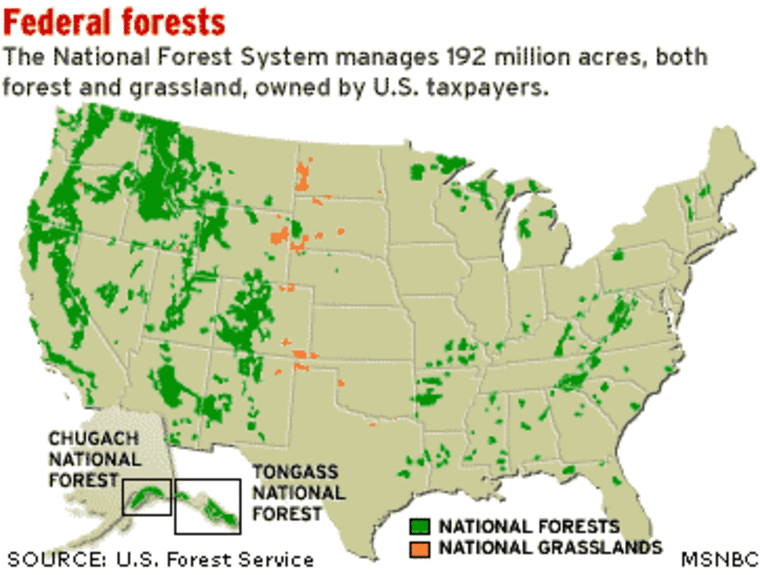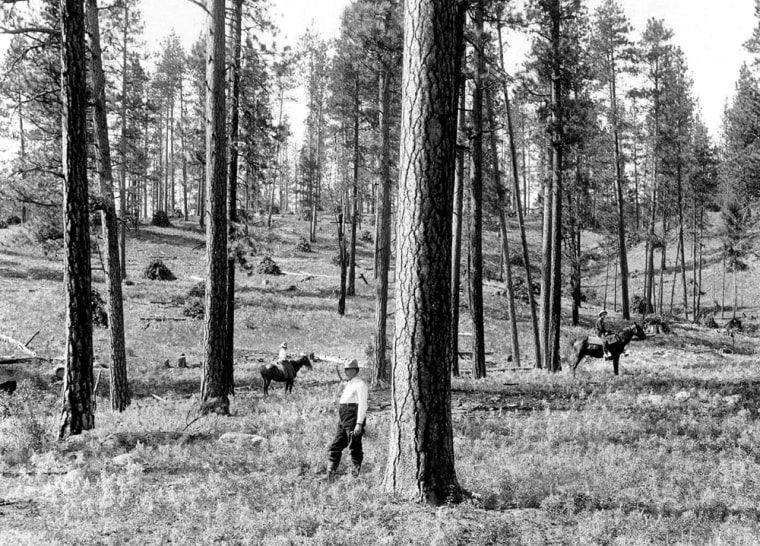The U.S. Forest Service has been accused of misrepresenting forest conditions by using misleading photographs in a brochure that urges more logging to prevent wildfires in the Sierra Nevada.
The pamphlet, created by a public relations firm, explains that fire risks have risen as the Sierra’s forests have grown more dense the past century. Six small black-and-white photos spanning 80 years appear beside descriptions of how the “forests of the past” had fewer trees and less underbrush, making them less susceptible to fire.
The 1909 photo shows an open, park-like forest with large trees spaced widely apart. More trees and underbrush appear in each successive picture — 1948, 1958, 1968, 1979 — and finally a photograph thick with trees in 1989.
“Today’s forests, dense with green, may seem beautiful, but in fact are deadly,” the pamphlet reads. “Our old-growth forests are choking with brush, tinder-dry debris and dead trees which make the risk of catastrophic fire high.”
Unnatural photo
However, the 1909 photo does not depict natural conditions — it was taken just after the forest had been logged.

And the pictured forest is nowhere near the Sierra Nevada. It’s in Montana.
“I was looking at the picture and I thought it looked awful familiar,” said Chad Hanson, director of the John Muir Project in Cedar Ridge, Calif. “I started looking around and sure enough, the industry has used it before in Montana. It’s from the Bitterroot Valley.”
Then Hanson used a magnifying glass to make another discovery.
“You can see huge slash piles and stumps in the background,” he said. “They give the impression this represents natural, pre-settlement conditions, but the picture was taken after logging had occurred and most of the trees had been removed.”
The same shot taken near Como Lake in the Bitterroot National Forest southwest of Hamilton, Mont., appeared in a 1983 Forest Service research report entitled “Fire and Vegetative Trends in the Northern Rockies: Interpretations from 1871-1982 photographs.”
The caption in that report said the photo shows “cleanup operations on the Lick Creek timber sale.”
The site also appears in another agency research paper in 1995 depicting an old-growth ponderosa pine stand at Lick Creek in 1909 “immediately before partial cutting.” That photo shows a forest three to four times more dense than the post-logging photo.
The agency has used the same photos — minus the pre-logging shot — in support of logging in the Pacific Northwest, too.
“I can’t believe they are still doing this,” said Timothy Ingalsbee of the Western Fire Ecology Center in Eugene, Ore. He said the agency used the same sequence of photos in 1998 “and misrepresented it to make it seem like it came from the forest just above Ashland, Oregon.”
Service's response
Forest Service officials confirmed the photos in the Sierra brochure are from Montana. They were used because they were typical of pine stands across much of the West, officials said.

“It is difficult to find a good series of repeat photographs of the same place over almost 100 years,” Forest Service spokesman Matt Mathes said.
“We used this one because it is an accurate record of how stands — including those in the Sierra Nevada — become increasingly dense without active management or wildfire,” he said.
Although the photos in the six-page color brochure have no caption, Hanson said the Sierra Nevada is the only region discussed.
“The clear implication is that this is in the Sierra Nevada. It is very misleading,” Hanson said.
The Forest Service spent $23,000 to produce and print 15,000 copies of the brochures as part of the “Forests for a Future” campaign that brought criticism from some members of Congress because the agency hired a private public relations firm.

Investigation sought
Reps. Jay Inslee, D-Wash., and Nick Rahall, D-W.Va., asked for an inspector general’s investigation into whether the agency broke any laws by spending $90,000 on the contract with OneWorld Communications Inc. of San Francisco.
The Forest Service defends using outside help and said the photos from Montana were not intended to mislead.
Mathes said the fact the forest was logged before the 1909 picture was taken does not matter. “The idea here was to show increasing density over time, which visibly did occur,” he said.
“Our goal here was to ... increase the clarity and understandability of our message,” he said. “We needed to be accurate but not necessarily precise to the 99th degree.”
Nevada Sen. Harry Reid, the second-ranking Democrat in the Senate, said the use of the Montana photos is “misleading” and said people “are smart enough to make up their own minds when presented with accurate facts, but this approach is disingenuous.”
